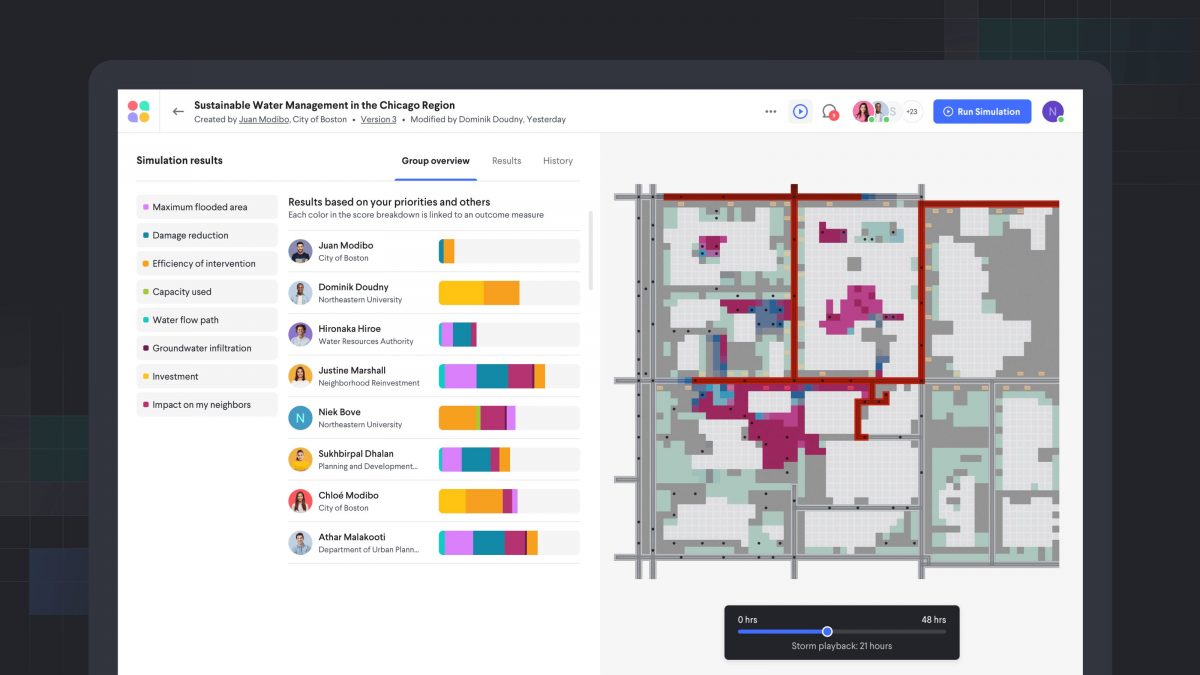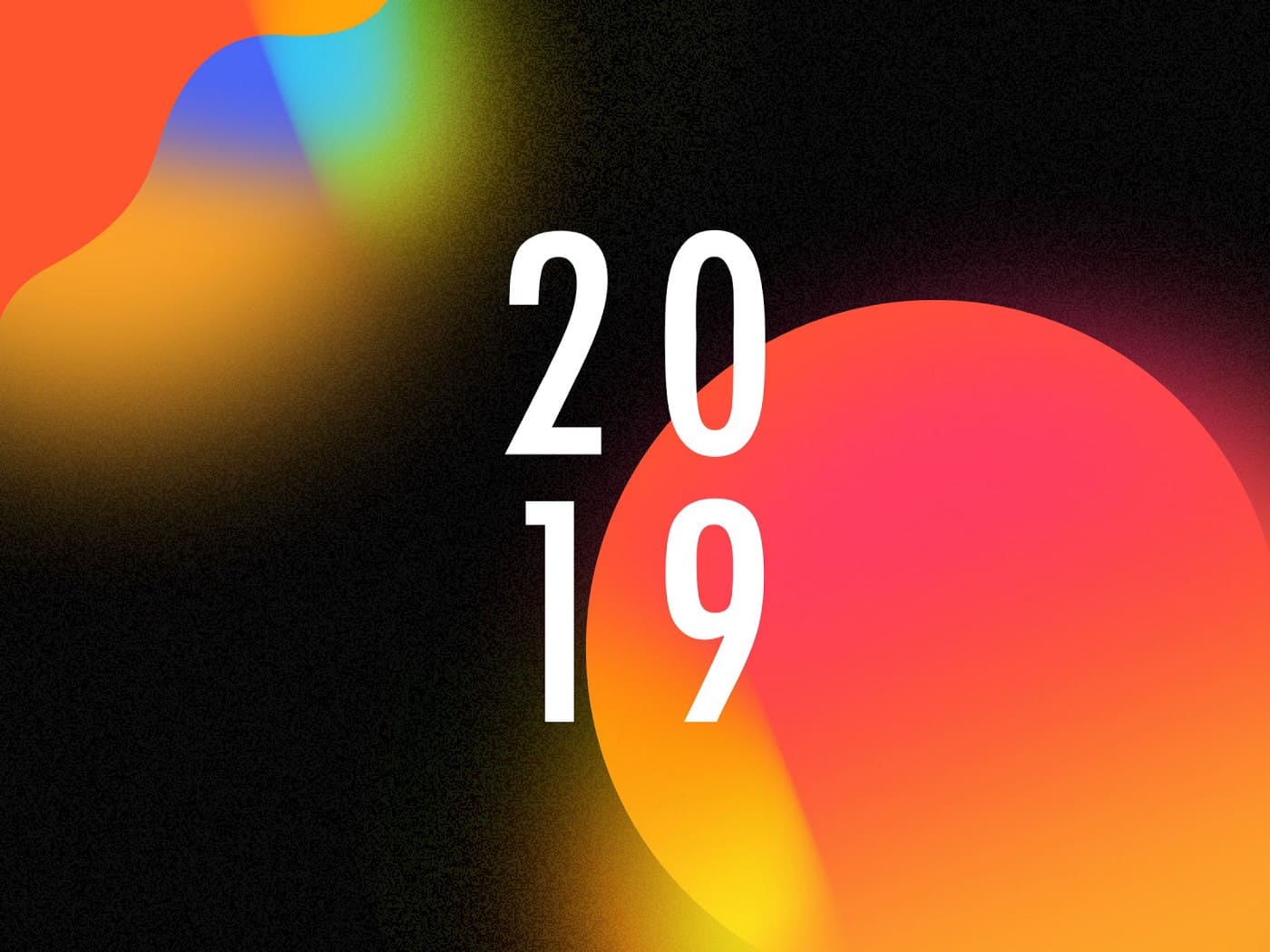Share This Article
Fora.ai was born out of the idea of addressing climate and social issues with a community and data-driven perspective. The team behind Fora.ai is a compassionate and incredible team of researchers and professors within the sector of urban planning, environmental science, and data science. We worked closely with a number of organizations to bring a collaborative process normally held in-person to online with visual and data tools that supported their long-standing research method and brought together community members and stakeholders.
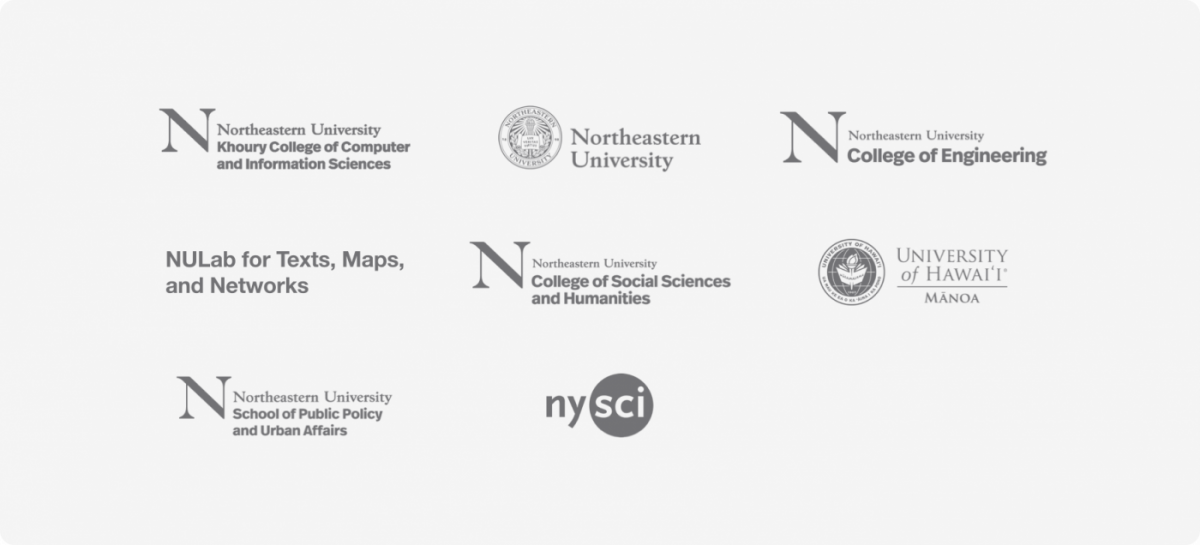
The method of participatory modeling and what it is
When you see a row of trees along a major city street being planted or open park space being added outside the city center, you’re seeing the culmination of many different efforts: city officials, finance office, urban planners, community organizations, and more. Participatory modeling aims to aid in that effort and process by involving more stakeholders and their concerns, using real data to simulate the damage of not acting and the cost saved short and long term, and building a workflow and process that doesn’t require complicated scientific equipment to make critical decisions.
To put it simply, participatory modeling is a learning and collaborative process to engage stakeholders and the community together in practicing real-world environmental planning.

The methodology has several stages:
- Define priorities: at the beginning of the project, all participants must first set their order of priorities.
- For example, a representative from the finance office may approach a project like improving green infrastructure as investment first, damage reduction second. On the other hand, an environmental planner may prioritize damage reduction and impact on neighbors higher.
- Build a solution together: it’s time to collaboratively bring together the pieces into practical use and try to solve the overall objective of the project.
- For example, a city block has heavy flooding each rainfall. Should the city increase vegetation in the area or direct the run off differently? These types of decisions and iterative planning is key to moving into the next step.
- Run the simulation: now with the pieces together, it’s time to run the simulation and test if the proposed solution meets the necessary criteria and priorities of the group.
- Collaborate and change: a solution isn’t always the right one the first time, or the next, or the next. Part of the method is to continually change and adapt the priorities of the participants, the cost benefit of the infrastructure change, and the environmental benefit – and all must balance together into one solution that the group can agree with.
How it was going in practice and what didn’t work
When we began working with the client, their team had already been teaching complex modeling strategies to researchers, scientists, community representatives and decision-makers across the US by hosting in-person workshops.
The seminars and workshops would bring individuals together to work on a scenario with a physical ‘game board’ that would map the geographical area that needed improvement and ‘game tokens’ would be placed on individual tiles that represented green infrastructure like rain barrels, bioswales (vegetation), permeable pavers, rain gardens, and more.
While in-person collaboration is a critical piece of the method and will continue to be so, the process was cumbersome to facilitate.
- Physical tokens needed to be modeled into the data visualization tool that was tedious and outdated to continually update, not to mention you had to be in person
- Multiple points of interaction like collecting participant priorities, setting the game board, and presenting simulations needed to be done by hand in order for the data to work together
- No all-in-one management system to collect participant feedback, manage profiles, see past simulation versions, and guage the best solution.
- Impact of change and visual simulations could not be interacted with and acted upon in real time
The method needed to be more importantly centered around the collaboration and that’s where our team’s background in community building, platform engineering, and user experience and strategy could be used to help take this project in a new direction.
Enter Fora.ai and how it helps real-world environmental planning
In partnership with the client, we needed to create and build a platform that most importantly automated data processes and more easily onboarded stakeholders. What took shape was an online collaboration platform that made it simple for groups to brainstorm and find solutions together while solving real problems in real-time.
I love working with Audentio! We started our productive collaboration through the MapTheCount project to support outreach efforts in the State of Illinois during the Census 2020, a high-stakes and fast-paced project. Our success was built on the mutual trust, commitment, and reliability, where everyone was a key player and contributor to the overall team. This strong collaboration led me to engage with Audentio again to develop a vision I had for participatory modeling to address many climate and social problems. This platform, which we named Fora.ai, allows people to engage with others through intuitive modeling of these problems, so that they can collaboratively design and test solutions, visualize the tradeoffs of each, and then deliberate to choose a solution to implement. Audentio has helped us create the visualizations and prototypes that are now generating significant interest and excitement. Audentio is not a developer team on standby, they’re one of us! They share our passion for what we do, providing support and expertise on strategy, through design and product, through our work with key stakeholders. They work from within our team, from start to finish, to see the job is done and done well.
Moira Zellner PhD, Director of Fora.ai, Professor, School of Public Policy and Urban Affairs, Northeastern University
Interactive whiteboard
The first step was taking the physical ‘game board’ and bringing it into an interactive whiteboard that allowed for drag and drop token placement, commenting, toggling visual terrain layers, editing the map, and version history.
Collecting participant priorities in concern profiles
The concern profile is aptly named for ranking the different priorities for each participant at the beginning of the project, during and at the end. The survey is created and collected on platform with priorities ranging from damage reduction, investment, maximum flooded area, and others to then be assessed through each simulation.
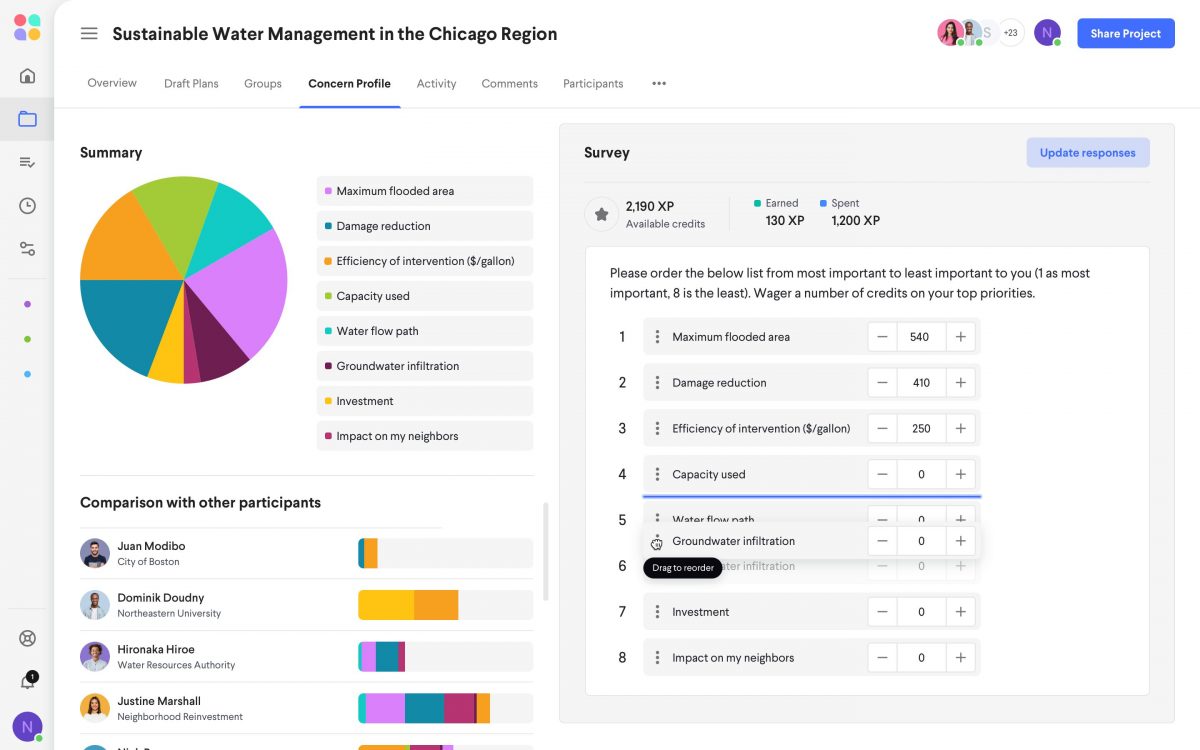
Running simulations and viewing results
After the map scenario has been iterated through in the whiteboard, the scenario can be run through a simulation to visualize the path of water flow, how the added intervention tokens helped, and identify critical areas that need to be addressed.
After the simulation, results are automatically scored by participants’ priorities and compared to the baseline (how the area currently exists without any intervention).
All-in-one project management
One place to organize all initiatives, invite team members and stakeholders, overview of all draft plans (past iterations) and collect votes on best candidates, view activity, and more. Facilitators no longer need to collect hard-copy surveys, coordinate participant schedules, and catalog by hand all iterations.
Engaging with the community and stakeholders
The platform to completion would be a large undertaking and short-term needed to tell a compelling story to community leaders and investors while presenting at seminars and conferences.
A product landing page was created to direct stakeholders to give an overview of the platform, key features, the mission behind it, and the team involved.
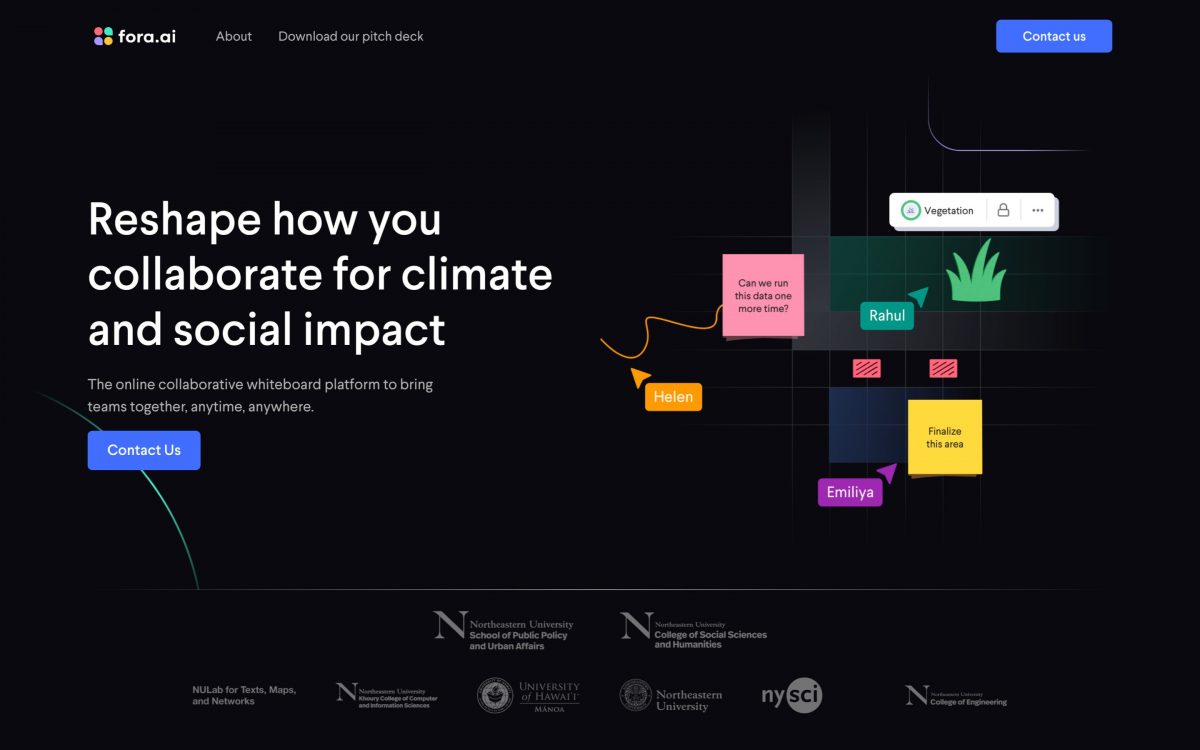
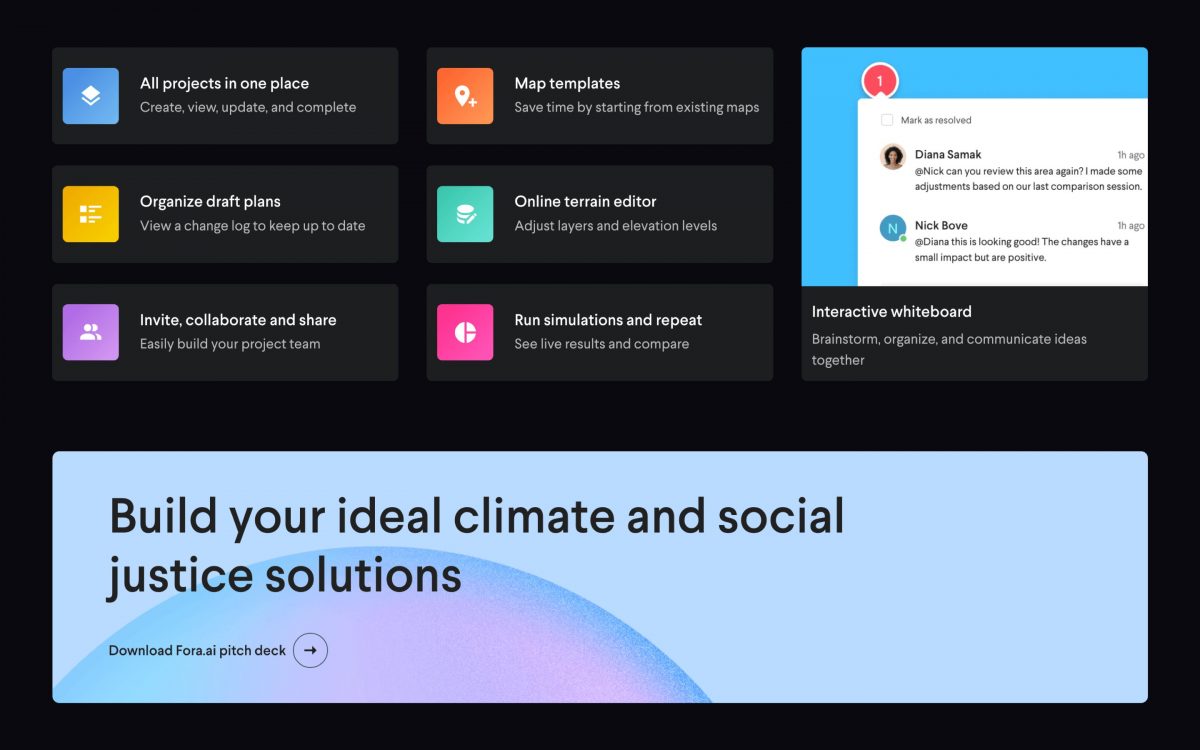
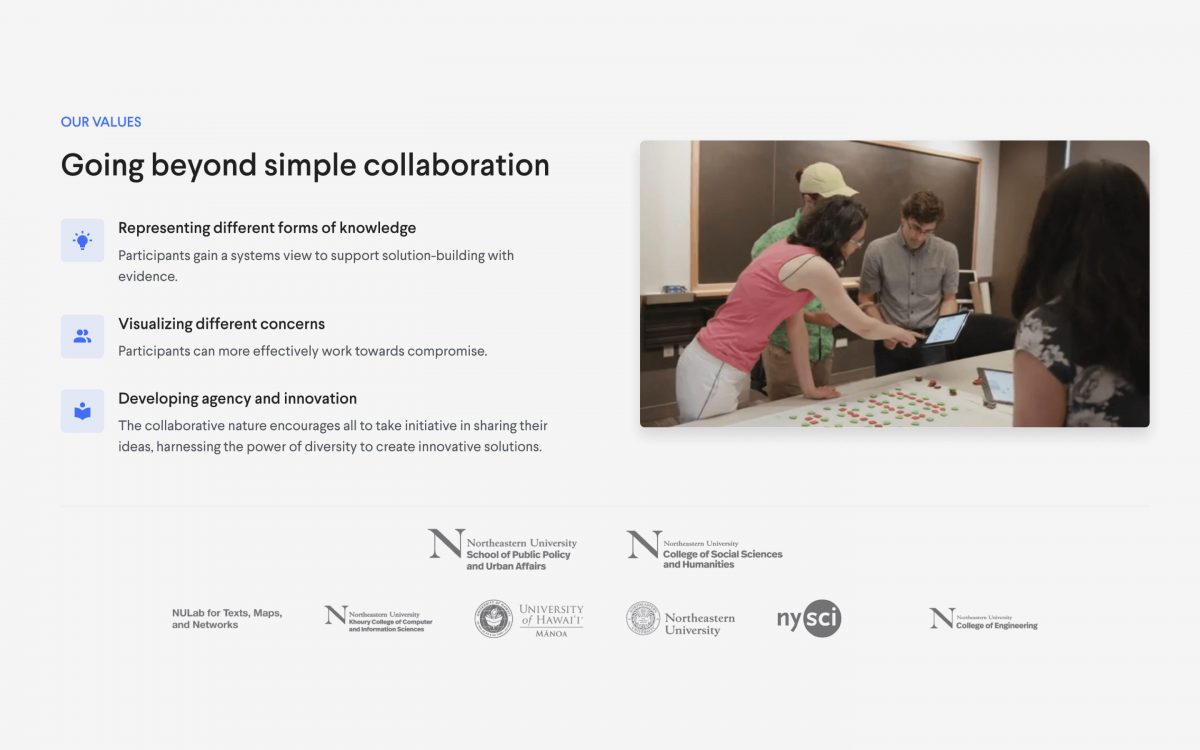
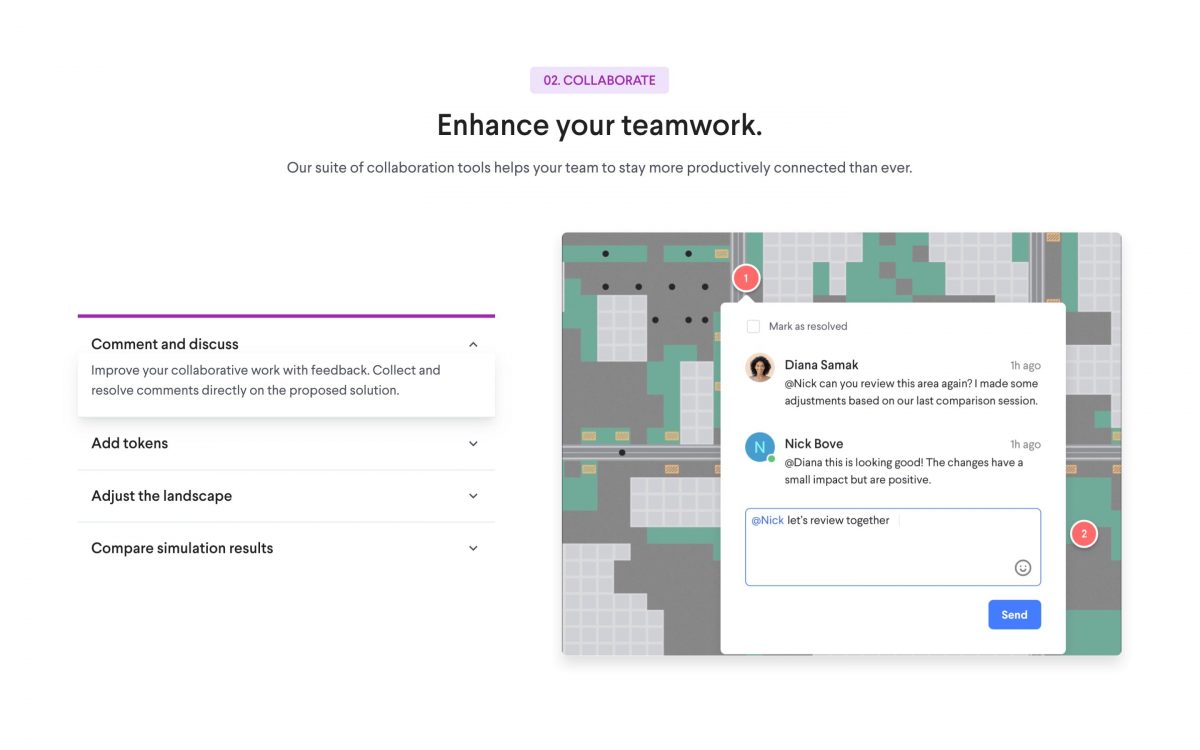
Together with the client, we crafted a presentation that communicated clearly the goals of the platform and showed a proof of concept with a 3D rendered simulation of a real problem area in Boston, Massachusetts.
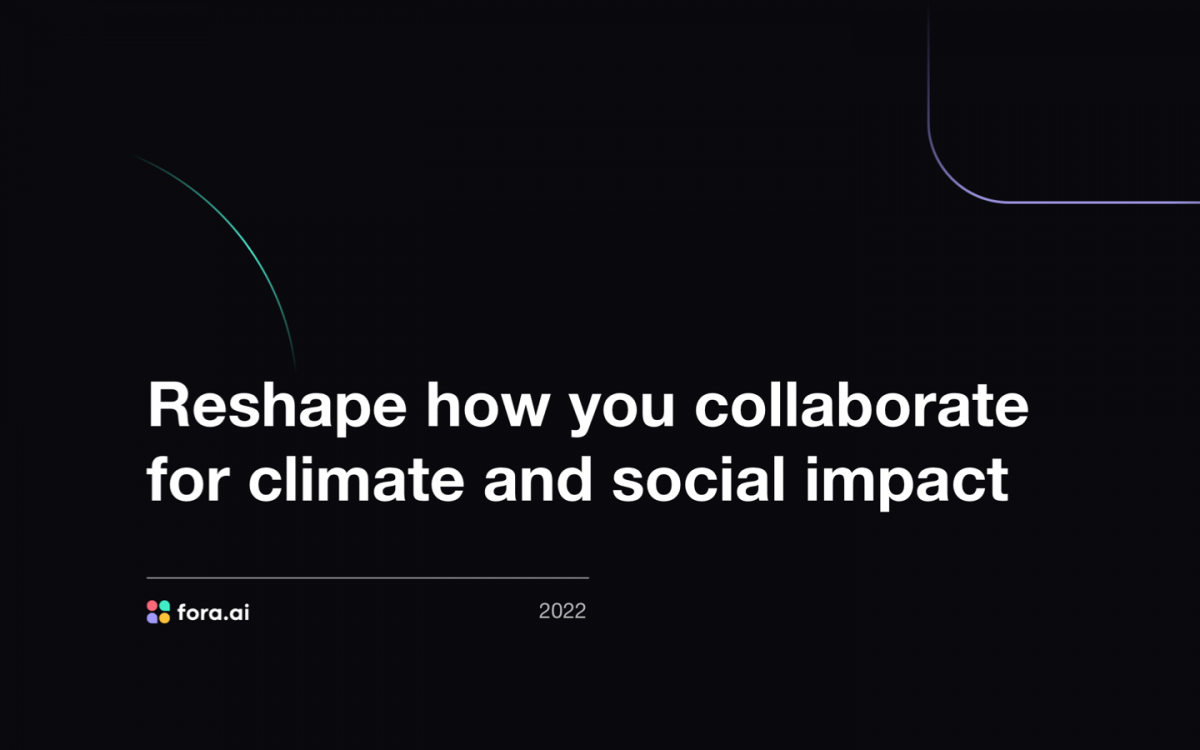

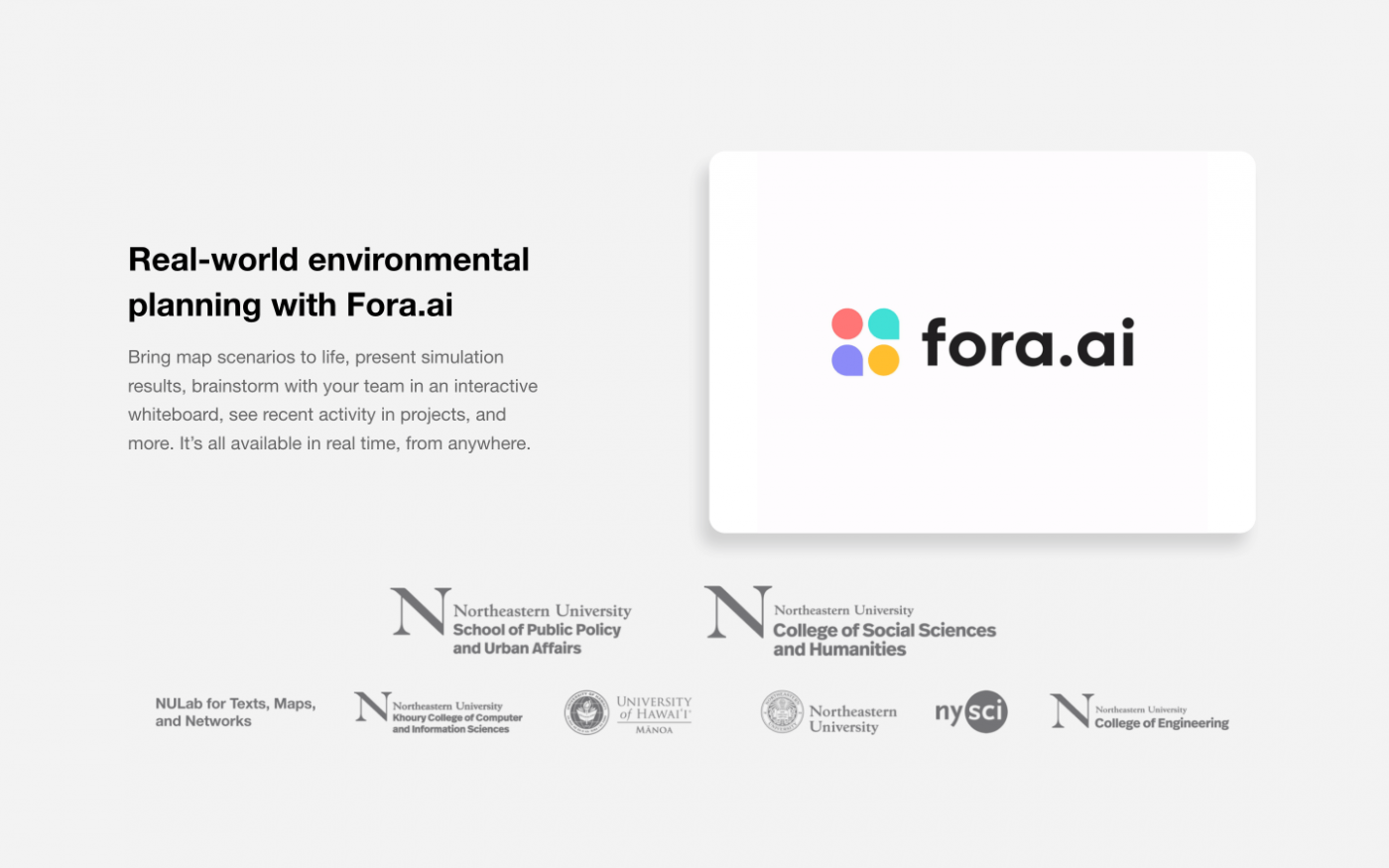

From prototype to MVP for ISAGA Conference
Northeastern University College of Arts, Media and Design was hosting their 53rd annual International Simulation and Gaming Association (ISAGA) conference that our client was invited to attend and host an in-person workshop that put Fora.ai into practice. The conference was focused on initiatives that brought interactive media and new learning technologies together to solve complex societal challenges which was a mission that perfectly aligned with the ambitions of Fora.ai and the team behind it.
For the MVP, we focused on the most critical aspect of the platform which was the interactive map and whiteboard that could then be run in a simulation and give accurate results back weighted by participant priorities.
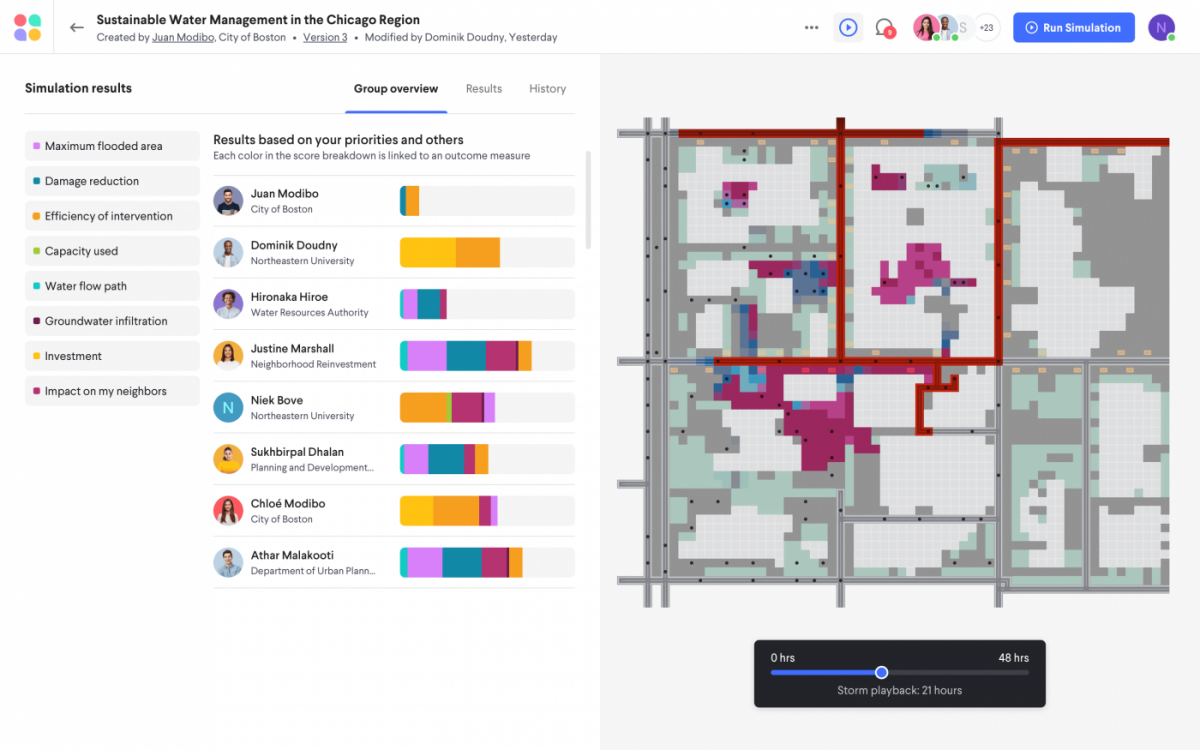
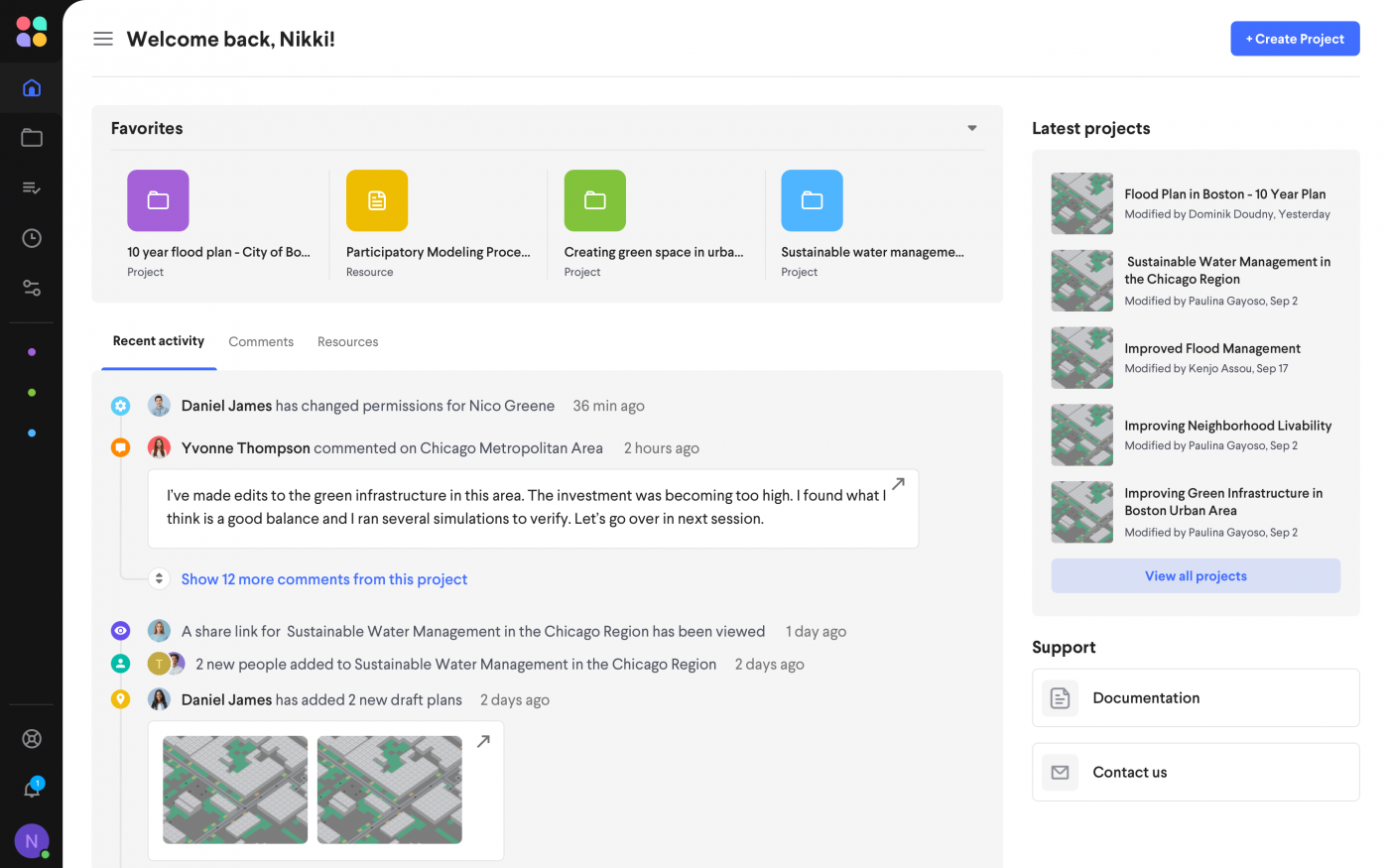
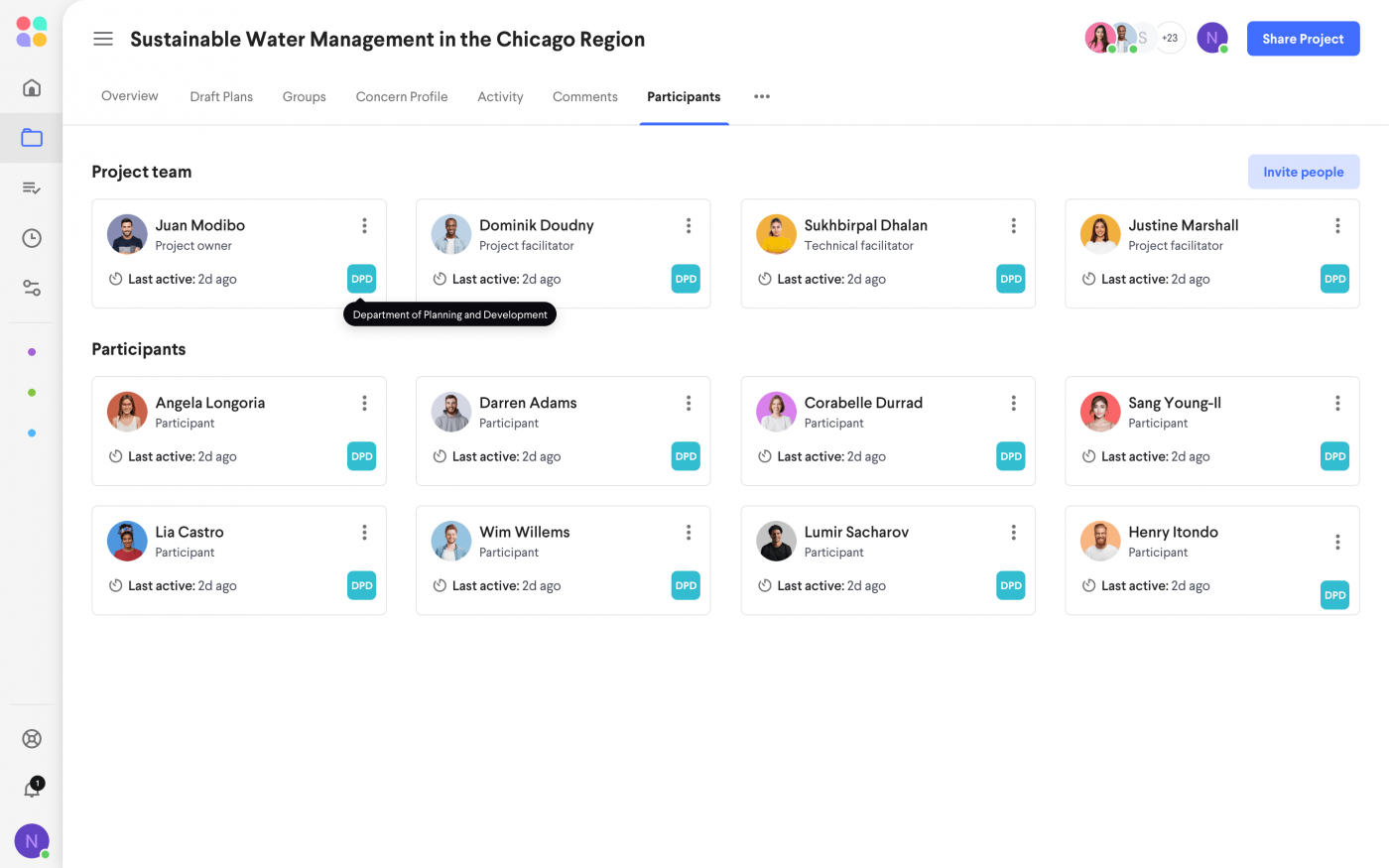
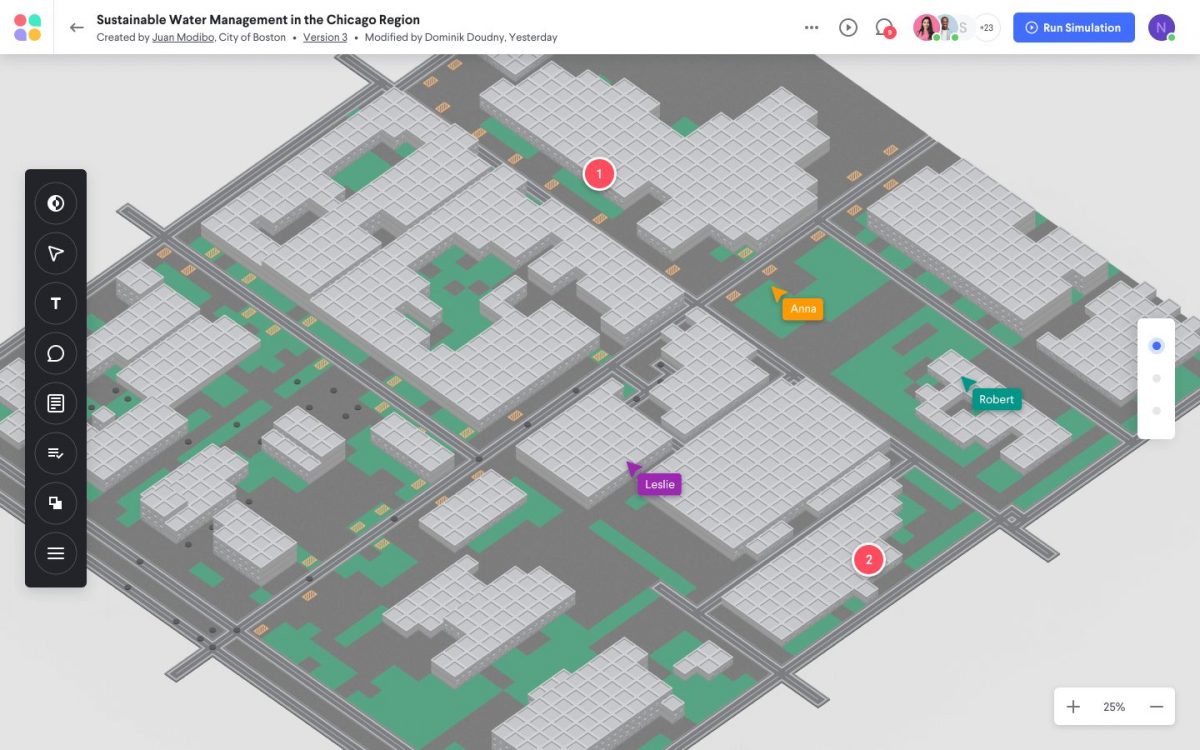
Looking to the future
As stakeholders and investors are continuing to be engaged, we look to the future of fully building out the platform and incorporating new ideas for learning such as gamifying the experience where participants can play educational mini-games and earn points for their contribution. It was and continues to be an incredible journey in working with the team behind Fora.ai and the opportunity to have tech lend itself to real-world climate and social issues.
